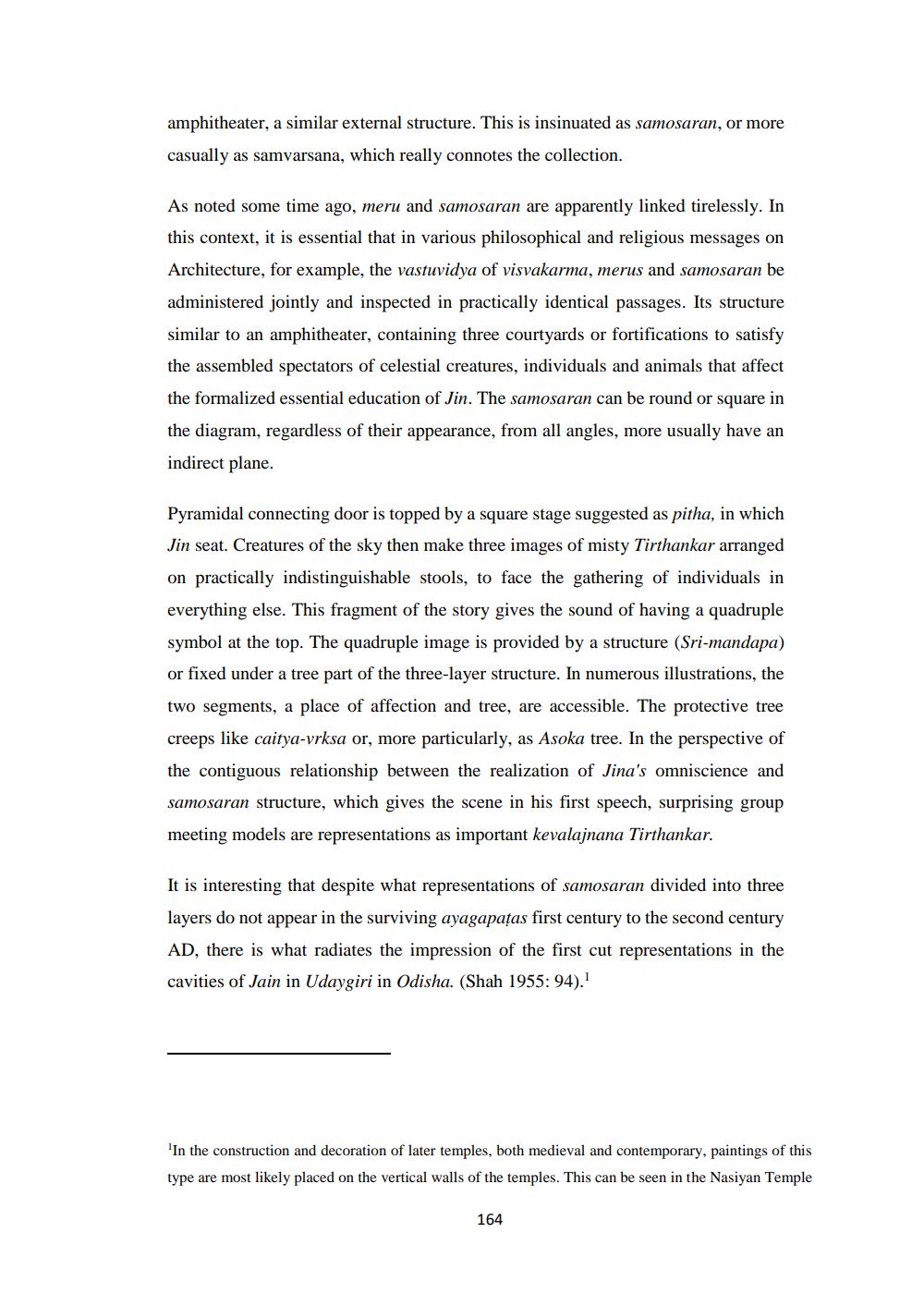________________
amphitheater, a similar external structure. This is insinuated as samosaran, or more casually as samvarsana, which really connotes the collection.
As noted some time ago, meru and samosaran are apparently linked tirelessly. In this context, it is essential that in various philosophical and religious messages on Architecture, for example, the vastuvidya of visvakarma, merus and samosaran be administered jointly and inspected in practically identical passages. Its structure similar to an amphitheater, containing three courtyards or fortifications to satisfy the assembled spectators of celestial creatures, individuals and animals that affect the formalized essential education of Jin. The samosaran can be round or square in the diagram, regardless of their appearance, from all angles, more usually have an indirect plane.
Pyramidal connecting door is topped by a square stage suggested as pitha, in which Jin seat. Creatures of the sky then make three images of misty Tirthankar arranged on practically indistinguishable stools, to face the gathering of individuals in everything else. This fragment of the story gives the sound of having a quadruple symbol at the top. The quadruple image is provided by a structure (Sri-mandapa) or fixed under a tree part of the three-layer structure. In numerous illustrations, the two segments, a place of affection and tree, are accessible. The protective tree creeps like caitya-vrksa or, more particularly, as Asoka tree. In the perspective of the contiguous relationship between the realization of Jina's omniscience and samosaran structure, which gives the scene in his first speech, surprising group meeting models are representations as important kevalajnana Tirthankar.
It is interesting that despite what representations of samosaran divided into three layers do not appear in the surviving ayagapatas first century to the second century AD, there is what radiates the impression of the first cut representations in the cavities of Jain in Udaygiri in Odisha. (Shah 1955: 94).
'In the construction and decoration of later temples, both medieval and contemporary, paintings of this type are most likely placed on the vertical walls of the temples. This can be seen in the Nasiyan Temple
164




